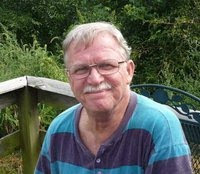
Roscoe Wind Farm, West Texas, U.S.
The butterfly sleeps well
perched on the temple bell...
until it rings.
---Buson
Nothing is secure but life, transition, the energizing spirit....People wish to be settled; but only so far as they are unsettled is there any hope for them.
---Ralph Waldo Emerson
Yang-uan's assistant was constantly thrown off balance by his master's words. Finally he commented that he never knew whether he was in an ordinary conversation or not.
"All our conversations are ordinary," Yang-uan said.
"Then why is it so hard for me to stay on my feet?" the assistant asked.
"No need to stay on your feet," Yang-uan replied.
---Zen mondo
From Forbes, yesterday~~~
The World's Biggest Green Energy Projects
Jonathan Fahey, 01.29.10, 1:30 PM ET
The U.S. government, desperate to add jobs to a feeble economy, is looking skyward for help: to the wind and the sun.
"We should put more Americans to work building clean energy facilities," Obama said to applause during his State of the Union address Wednesday. Solar and wind power projects tend to appeal to politicians on both sides of the aisle. They are clean and domestic sources of power, and thanks to this government largesse, they are growing fast.
The American Wind Energy Association reported last week that in 2009 the nation's wind power grew 39%, and that it has grown by 39% annually for the past five years. It's a similar story with other technologies, like solar power, and abroad, where generous government subsidies in Europe and huge government-backed projects in India and China are fueling growth.
Of the top 10 largest renewable energy projects in the world, five were completed in the last two years.
That's the good news for renewable advocates. The bad news: Renewable energy remains a stubbornly small percentage of both the United States' and the world's energy portfolio. In the U.S., renewable power is about 10% of the electricity mix--subtract hydroelectric power and we're down to just 3%. Worldwide, the share of energy from renewables is closer to 20%, with just 3% from non-hydro.
The reason, of course, is that renewable power is expensive. Even a stiff breeze or blazing sunshine doesn't pack the same energy punch as a lump of coal or a nuclear fuel rod, and it isn't always sunny or windy. While a nuclear reactor will produce nearly 95% of its peak capacity, a wind farm's output will typically be 20% to 40% of its peak and a solar farm about 10% to 20%, depending on location.
The world's biggest wind farm, the Roscoe Wind Farm in Texas, has a maximum capacity of 782 megawatts. A nuclear plant with the same capacity would power 600,000 homes; given the fickle nature of wind, Roscoe will only produce enough to power 200,000 typical American homes.
But renewable plants are getting ever bigger, especially in China, where plans are on a scale far beyond anything contemplated in the rest of the world. The U.S. now has three of the 10 biggest projects in the world, but it will very soon lose the crown for largest wind project and largest solar project to China.
This month China announced it would build a 2,000 MW solar thermal project, five times bigger than the current largest one, California's Solar Energy Generating System. China is in the midst of building a wind corridor that could grow to a staggering 20,000MW, 25 times the size of Texas' Roscoe Wind Farm. And last fall China announced a plan to build a 2,000 MW solar photovoltaic farm, 33 times bigger than the world's largest today, a 60 MW farm in Spain.
Big projects can be tricky to navigate in the U.S. Though economies of scale help to reduce the cost per watt of bigger projects, bigger projects are riskier. "From the developer's perspective, bigger is better," says Ethan Zindler, an analyst at Bloomberg New Energy Finance. "But from the utility's perspective and the financier's perspective, that's not always the case."
Another problem in the U.S. right now is that projects need to get up and running before government subsidies run out, and smaller projects are easier to complete. For example, at the end of this year a provision that allows developers to get a cash grant for 30% of the construction cost of certain projects is scheduled to expire.
Also, permitting and licensing bigger projects can be more difficult. There's a rash of proposals for geothermal power plants rated at a relatively modest 49.9 MW, says Karl Gawell, executive director of the Geothermal Energy Association, because permitting is easier for plants under 50 MW.
This kind of thing irks Obama. "They're making serious investments in clean energy because they want those jobs," he said of countries like Germany, which have more generous and stable renewable energy subsidies that make projects easier to finance. "Well, I do not accept second place for the United States of America."
He may have no choice, but maybe Obama can take heart in the fact that China's two big solar farms will use U.S. technology. The big photovoltaic farm will use panels built by Arizona's First Solar and the solar thermal farm will use technology developed by California's eSolar.
Additional reporting by Jhelum Bagchi
2010 Forbes.com LLC™
Don't miss the slide show of green energy projects at the story's link~~~
http://www.forbes.com/2010/01/29/solar-wind-biomass-business-energy-green-projects.html?boxes=businesschannelsections

